This pub is closed permanently. Your nearest Wetherspoon pub: J.J. Moon’s, Ruislip Manor
‘Tichenham’ is how this area was recorded in the Domesday Book, compiled for William the Conqueror in 1086. Ickenham remained a farming community until the 1920s. Although reduced in size, Church Farm survived until 1946. This Wetherspoon pub stands on part of the old farmland.
A selection of old prints showing different scenes in Ickenham.
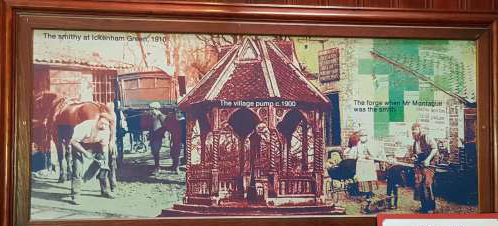
A selection of old photographs showing different scenes in Ickenham.

A print of Ickenham Village Green from 1990 to the 1950s.
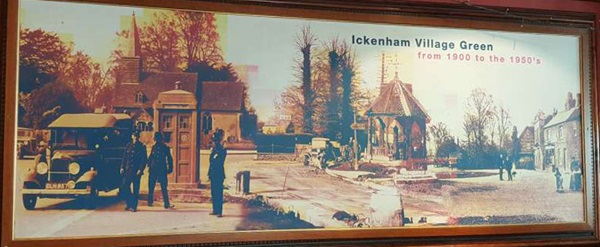
Prints and text about Swakeleys Manor.
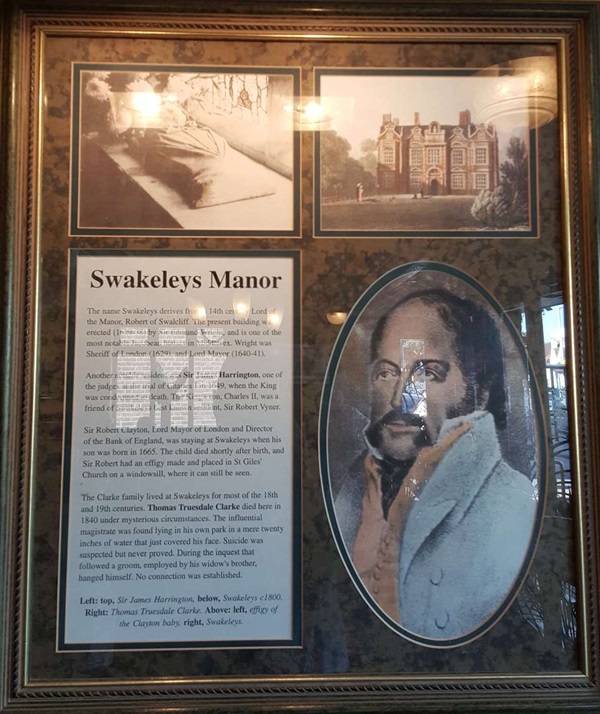
The text reads: The name Swakeleys derives from a 14th century Lord of the Manor, Robert of Swalcliff. The present building was erected in 1638 by Sir Edmund Wright, and is one of the most notable Jacobean houses in Middlesex. Wright was Sheriff of London (1629), and Lord Mayor (1640-41).
Another notable resident was Sir James Harrington, one of the judges at the trial of Charles I in 1649, when the King was condemned to death. The King’s son, Charles II, was a friend of Swakeleys best known resident, Sir Robert Vyner.
Sir Robert Clayton, Lord Mayor of London and director of the Bank of England, was staying at Swakeleys when his son was born in 1665. The child died shortly after birth, and Sir Robert had an effigy made and placed in St Giles’ Church on a windowsill, where it can still be seen.
The Clarke family lived at Swakeleys for most of the 18th and 19th centuries. Thomas Truesdale Clarke died here in 1840 under mysterious circumstances. The influential magistrate was found lying in his own park in a mere twenty inches of water that just covered his face. Suicide was suspected but never proved. During the inquest that followed, a groom, employed by his widow’s brother, hanged himself. No connection was established.
Left: top, Sir James Harrington, below, Swakeleys c1880
Right: Thomas Truesdale Clarke
Above: left, effigy of the Clayton baby, right, Swakeleys.
An illustration and photograph of Swakeleys House.
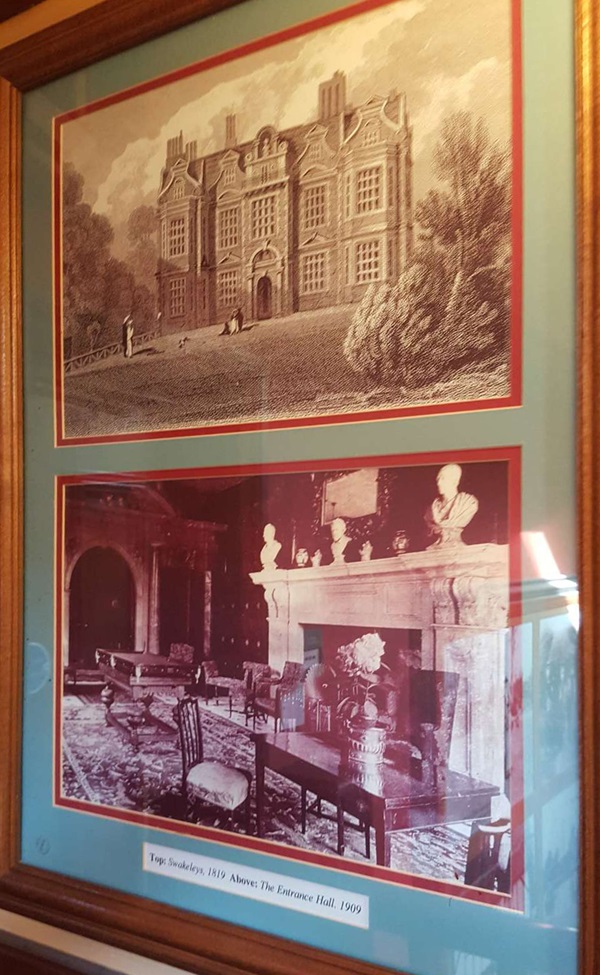
Top: Swakeleys, 1819
Above: The Entrance Hall, 1909.
External photograph of the building – main entrance.
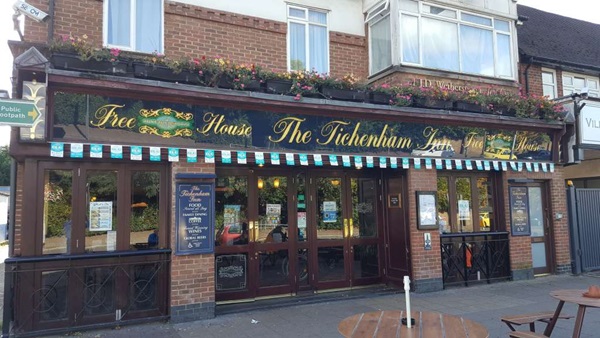
If you have information on the history of this pub, then we’d like you to share it with us. Please e-mail all information to: pubhistories@jdwetherspoon.co.uk